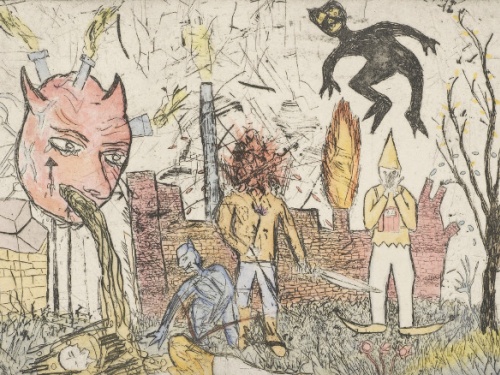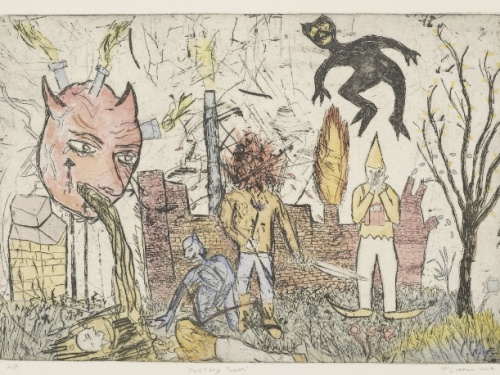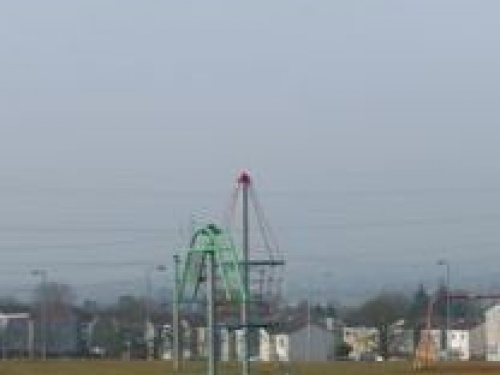No Collars: A Sicilian Mediation
The geography and multilayered history of Siciliy inspired Almadraba 38.17° N 13.24° E, a recent work by Bloomberg New Contemporaries 2015 artist U. Kanad Chakrabarti. Here, he reflects on the place and its significance in his video.
"In a family which for centuries had been incapable even of adding up their own expenditures and subtracting their own debts he was the first (and last) to have a genuine bent for mathematics; this he had applied to astronomy…The truth is that he wanted to draw a little comfort from gazing at the stars….seeing them revived him; they were distant, they were omnipotent and at the same time they were docile to his calculations; just the contrary to humans, always too near, so weak and yet so quarrelsome." (The Leopard)
Looking at the video Almadraba 38.17° N 13.24° E after I have made it, it seems to be shot through with ghosts: Don Fabrizio Corbera, Muhammad al-Idrisi, William Kingdon Clifford...
For some time, I had the intention of making an image essay, relying primarily on my own photographic archive of Sicily. My engagement with the island started in the mid-1990s in New York’s Chelsea, where I used to hang out with a bunch of artists from Catania. Over drinks at the disco-gallery Passerby, they would tell tales, bitter laments really, of their island: Holy Roman emperors thrice-excommunicated; lions and peacocks frolicking in fragrant orange groves; the Vatican’s own banker, hanging from a London bridge in shoes of concrete. And, of course, they talked of Capaci and The Kiss.
In 2003, I got to Palermo to look for myself, and over the subsequent decade and some six trips, have formed both a photographic collection and a mental picture. Three millennia of events have kept Sicily at the omphalos, the centre of the Middle Sea. Indeed, I see her as both metaphor and site for globalisation: shipping routes, petrochemicals, ecological collapse, the muezzin’s call against peal of bells, criminality metastasised into the state’s power and capital structures. So how does one get that into a video, in light of the daunting body of existing films on the Mezzogiorno?
Giuseppe Tomasi di Lampedusa’s The Leopard became my framework, for the observations it makes about the Risorgimento have not lost their punch. I recall Don Fabrizio’s patient explanation of the Sicilian collective psychology to the Chevalley from Turin, who, though wary of a ‘knife in the gut’, has the mildly patronising, yet well-meaning, air of a colonial reformer.
So, it is perhaps ironic that one epicentre of the present migration crisis happens to be the family’s old fief of Lampedusa, an island sold for a song to balance the estate’s accounts. The current situation also has a historical mirror: Sicily herself had exported countless assets—people and produce—to fuel the postwar reconstruction of Northern Italy, and indeed, the building of America.
The movement of peoples across the Mediterranean, with an attendant bleeding of cultures across geography and time, brought me to Muhammad al-Idrisi, a Muslim cartographer who worked in the 12th-century Palermo court of the Norman King Roger II. He made an atlas—its projections curiously distorted—of the known world. This book, a strategic and diplomatic resource, contained economic, political and cultural synopses of each of the seventy divisions of his world…a precursor to the CIA's World Factbook.
Maps, charts, atlases—these basic geographic terms have rather specific meanings in mathematics—namely in the way we describe the curvature of space. In the course of developing a related work, Clifford Torus, I read about a Victorian mathematician who was shipwrecked in Sicily, and in, the course of his short life, contributed tremendously to the theory of mapping four-dimensional spaces. Thus the circle was closed when, upon re-reading The Leopard, I encountered passages describing Don Fabrizio's mathematical diversions. They transported him to an empyrean, ridden of the ambiguity and sordid compromises that mark Sicily, then and now.
I began this project without a preconception of what I actually wanted to say in the completed work. In a sense, I approached the video as I approach studio practice—led by the material—improvisational, layered, a bit cack-handed, and open to ‘mission-creep’, or even failure. Perhaps, in doing so, I have ended up with an image-essay that is over-full, a riot of images best taken with a glass of the island’s strong wine.
"The guests…liked their glasses filled to the brim (‘no collars’ they would call to the footman), but in the absence of a collar…they emptied but one or at most two." (from The Leopard, quoted in The Art of Eating vol.65, 2003, pp. 11-12)
"The wines [of Sicily] ‘flash like a knife…leave the unprepared drinker more dead than alive’."
(from The Wines of Italy by Luigi Veronelli, quoted in The Art of Eating vol.65, 2003, pp. 11-12) ■
Bloomberg New Contemporaries 2015 runs 25 November 2015 - 24 January 2016
If you are interested in viewing this work, please contact the artist.
This article is posted in: Articles, Blog, Exhibitions
Tagged with: Bloomberg New Contemporaries 2015, bloomberg new contemporaries, learning, U. Kanad Chakrabarti, Sicily, Video, Film, Art, Artists









